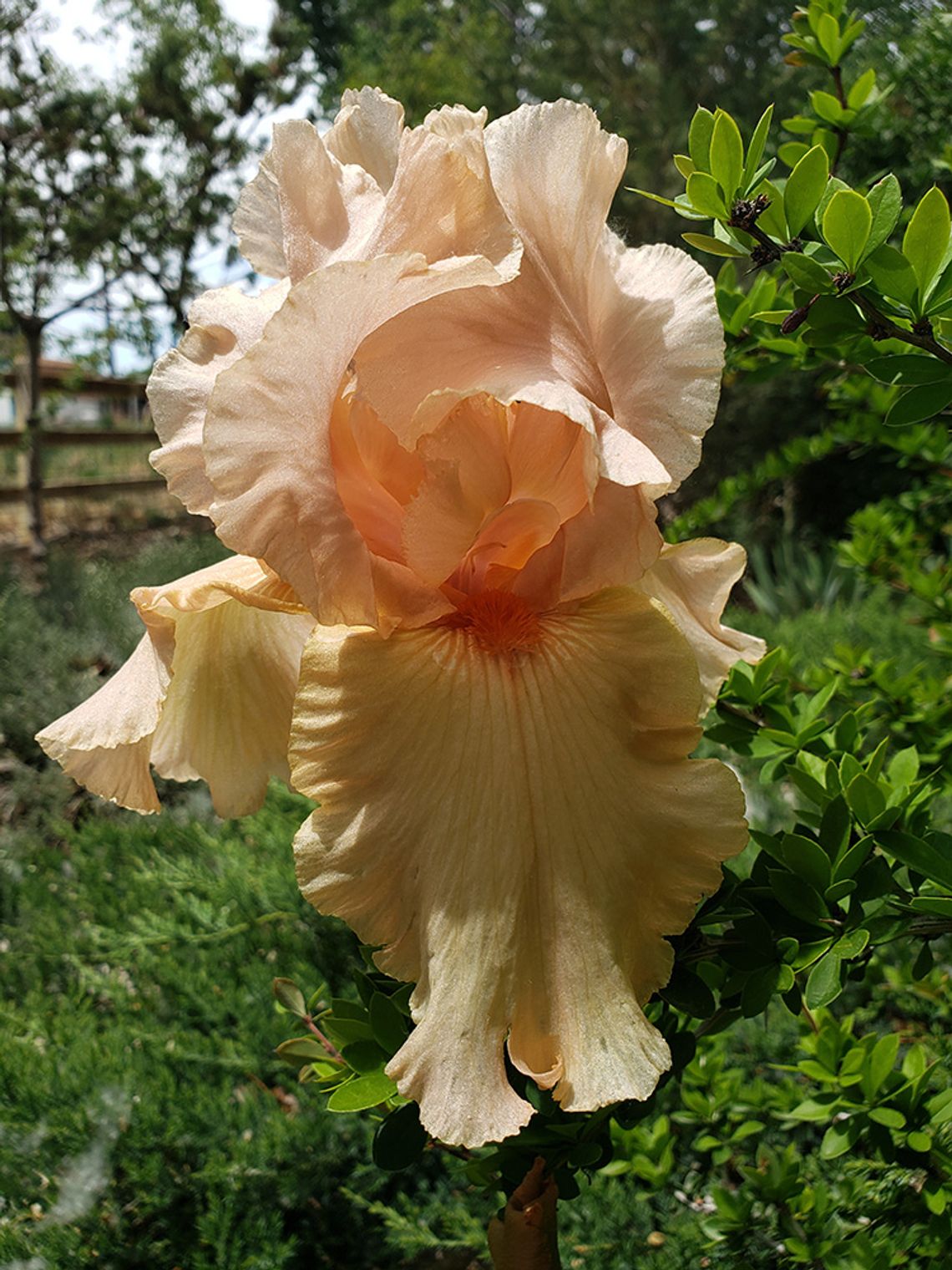A confession, I have neglected a once beautiful, Van Gogh-inspired, bearded iris bed. Promising myself to get to it every time I walk by it is still surviving despite my abandonment (let that tell you how hardly irises are). It is way overcrowded and I have noticed fewer flowers and smaller blooms in early summer when it should be the star of my garden. As we devoted more time on our farm to growing veggies, my flower garden to-dos have pushed dividing irises to the bottom of the list for several years now. You usually want to divide your rhizomes and replant them every 2-5 years. Dividing the rhizomes is not a difficult task. Plus, it is really nice to share a few extras with friends. I have probably mentioned this before, but I have some gorgeous irises a neighbor shared with me many years ago. Being friends with Mrs. Dennis was a joy, often black garbage bags of daylilies or irises she thinned ended up on your doorstep. I think of her every time they bloom.
If you have a bed that needs dividing, do it. Like going to the dentist, no one wants to go but you’ll feel better afterward. Shout out to Nevada Dental Arts.
Depending on where you look, advice varies on when to do your dividing. Some recommend the task after the bloom period is complete. Some garden experts recommend late July thru mid-August. I have done both, here is how I go about it.
- Pour yourself a cocktail. Did you know Bombay Sapphire gin has iris root in the list of ingredients? Good to be in the theme here.
- Dig up your entire clump. If you have heavy or hard soil, maybe water a day or two prior to help soften your soil prior to digging. The roots are only a few inches down so no need to dig too deeply. Shake off excess dirt. Access the overall clump. Does it look fairly healthy? Are the rhizomes plump or shriveled and dried out? Any areas that are soft and rotten? Healthy roots and leaves?
- Trim your leaves down to about 5 inches. Some folks trim at an angle or a pyramid to help moisture roll off the leaves in an attempt to help prevent diseases from spreading. I trim straight across the fan because excessive moisture isn’t usually a problem in my garden and I’m usually in a hurry if I am being honest. If the leaves you pruned off looked healthy you can add them to your compost pile.
- Using a sharp knife (careful not to pull a Kelli Kelly!) trim out rhizomes from the clump. Ideally, you are looking for a few inches and a fan. The main “mother” usually in the center that has bloomed, won’t flower again so you can discard it. Also, discard pieces that are rotted or have insect damage.
- It’s a good idea to add a balanced fertilizer and maybe some compost back to the soil before you replant. Don’t replant them too deeply, you want to leave a small bit of the top of the rhizome exposed. Water them in. You can store rhizomes in a cool, dry place for a bit if you cannot replant them straight away.
If you do not have any in your yard, fall is a great time to add bearded irises. Check local nurseries. Many breeders are having online sales now as well. They are fairly drought tolerant and somewhat deer resistant. Plus, they can handle Nevada sun.
Growers’ notes.
There are about 300 species in the Iris genus. Irises are named after the Greek goddess. I am secretly jealous of everyone with a plant name! The roots are used in medicines and perfumes. Roots and flowers can make a very beautiful dye for paper and fabric. If you plant a bed with mixed varieties, sometimes one cultivar can be a little tougher than others (especially the common light and dark purple variety) and can take over your bed after a few years. Irises don’t change colors based on pH or revert. You can grow irises from seed if you notice any seed pods forming on your plants. You might end up with new colors, though it does take a while.









Comment
Comments